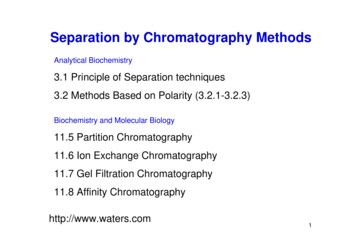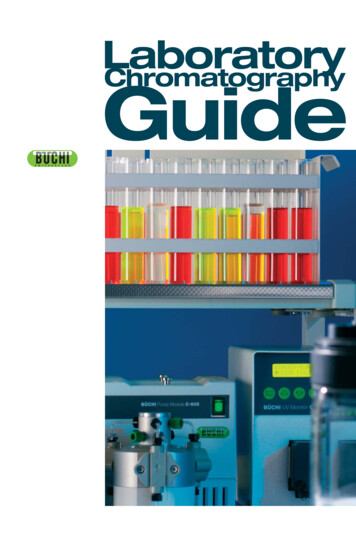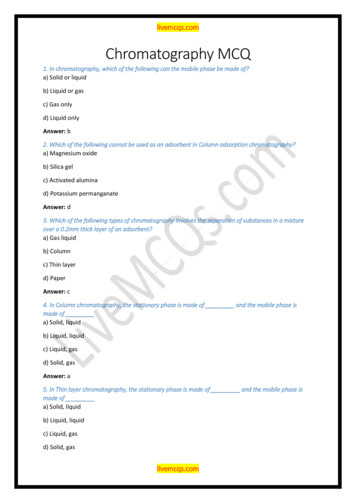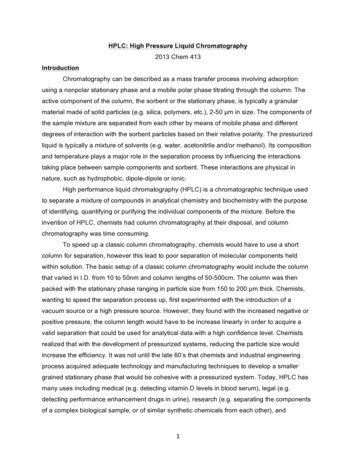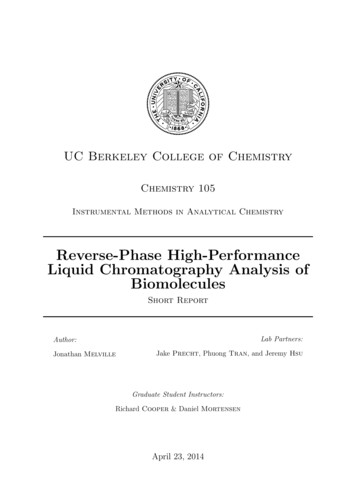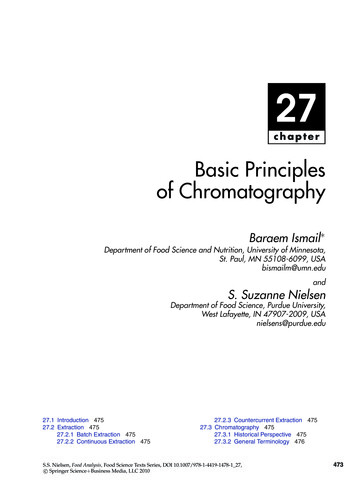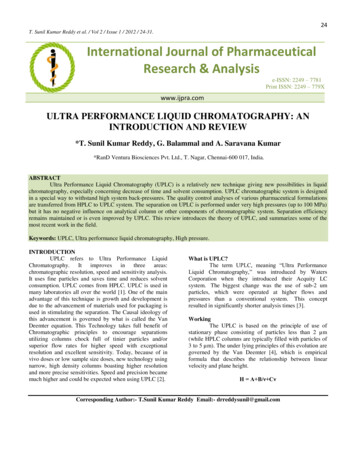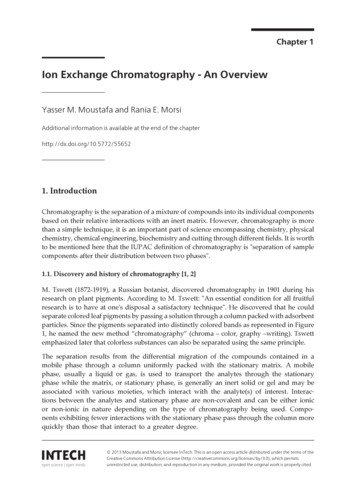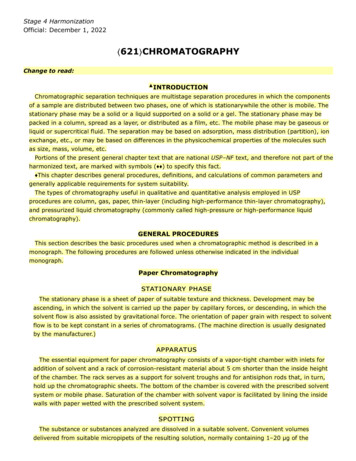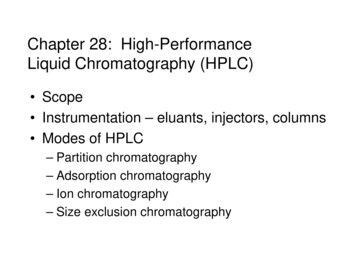
Transcription
Chapter 28: High-PerformanceLiquid Chromatography (HPLC) Scope Instrumentation – eluants, injectors, columns Modes of HPLC– Partition chromatography– Adsorption chromatography– Ion chromatography– Size exclusion chromatography
HPLC Most widely used separation technique Broad applicability – organic & inorganic Can be very sensitive, accurate & precise Suitable for separation of nonvolatilespecies Has found numerous uses in industry,clinical settings, environmental areas,pharmaceuticals, etc.
Solvents (mobile phase) – are storedin special reservoirs connected to thepumping system – must be free ofparticles that can clog components & free ofbubble forming gases that get trapped incolumn or detectorThree basic ways to degas solvents1) vacuum or suction filter (0.4 or 0.2 µm)2) ultrasonicate (with vacuum)3) He purge (sparge units often built in)Can purchase HPLC solvents & water - still
HPLC pumping systems typicallyemploy two reciprocating orpiston pumpsCheck valves& pump sealsneed to bereplacedPulse-freeflow is neverreallyachieved
In GC the analyte affinity for thecolumn is influenced by tempIn HPLC the solvent strengthaffects an analytes retention on columnTherefore, analogous to temp programmingin GC, do solvent programming in HPLCThis is also referred to as gradient elution
Gradient elutiondramaticallyimproves theefficiency ofseparation
HPLC sample injectors areexclusively 6 port valves thatare overfilled by syringe givingextreme accuracy & precision – typicalvolumes are 10 to 50 µL but can be larger
Rotary Injection ValveCommon for HPLC, rare in GC
Injector for HPLC6 port rotary valve
Columns- usually stainless steel- can be PEEK (poly ether ether ketone)- may cost 200- 1000 packed- Length 10-30 cm, ID 4-10 mm- Packings are 3, 5, or 10 µm particle size- Most common 25 cm, 5 µ, 4.6 mm ID- N 40,000 to 60,000- Normally packed under 6000 psi pressureat factory as a slurry
Guard columns are normally usedbefore the analytical column toprotect & increase lifetime ofcolumn – operator usually slurry or drypacks short guard column regularly withsame or similar packing used in analyticalcolumn (old column material) – canpurchase guard systems, cartridges, etc.
Detectors for HPLC- Ideal characteristics same as GC- Exception is temp range- Low dead volume 1 to 10 µLMost common detector is UV-visabsorbance detectorThree types1) Filter instrument – optical filters, Hg lamp2) Variable wavelength – monochromator3) Diode array detector- provide spectra
Many HPLC detectors availableFor universal & selective detection
1) Filter based UV-vis detector –Typically set at 254 nm usingthe most prominent band inHg spectrum – can also use 313,365, 334 nm and other lines as well2) Variable wavelength detectors – usecontinuum source like (D2 or H2) & amonochromator, select any λ, lesssensitive3) PDA - D2 or H2 source, disperse & focuson diode array, get complete spectrumevery 1 sec, powerful, expensive, lesssensitive, lots of data generated
Cell forUV-visdetectorfor HPLC- Low vol
Diode Array Detector
Fluorescence detector – normallyfixed wavelength filter fluorometerexcitation filter & emission filtercan be changed for particular λ of interestgives selectivity based on:- ability to exhibit fluorescence- excitation wavelength- emission wavelengthVariable λ monochromator basedfluorescence detectors also availableFilter based detectors usually more sensitive
Refractive index detector (RI) responds to nearly all solutesbut has poor sensitivity – detectschanges in refractive index as samplepasses through as long as solute hasdifferent RI than solvent – analogous toTCD in GC
Electrochemical Detection Amperometric – fix potential &measure current (i) Conductometric – measure conductivity Coulometric – fix potential & integrate i Voltammetric – vary potential & measure i Potentiometric – measure potentialCan use 2 or 3 electrode design with Pt orcarbon electrodes (glassy C or C paste)Electrochem. detector nearly universal
Other HPLC detectors LC-MS using thermospray – newpopularity (pharmaceuticals) Evaporative light scattering - polymers LC-FTIR LC-plasma emission or ICP-MS
Chapter 28: High-Performance Liquid Chromatography (HPLC) Scope Instrumentation – eluants, injectors, columns Modes of HPLC – Partition chromatography – Adsorption chromatography – Ion chromatography
